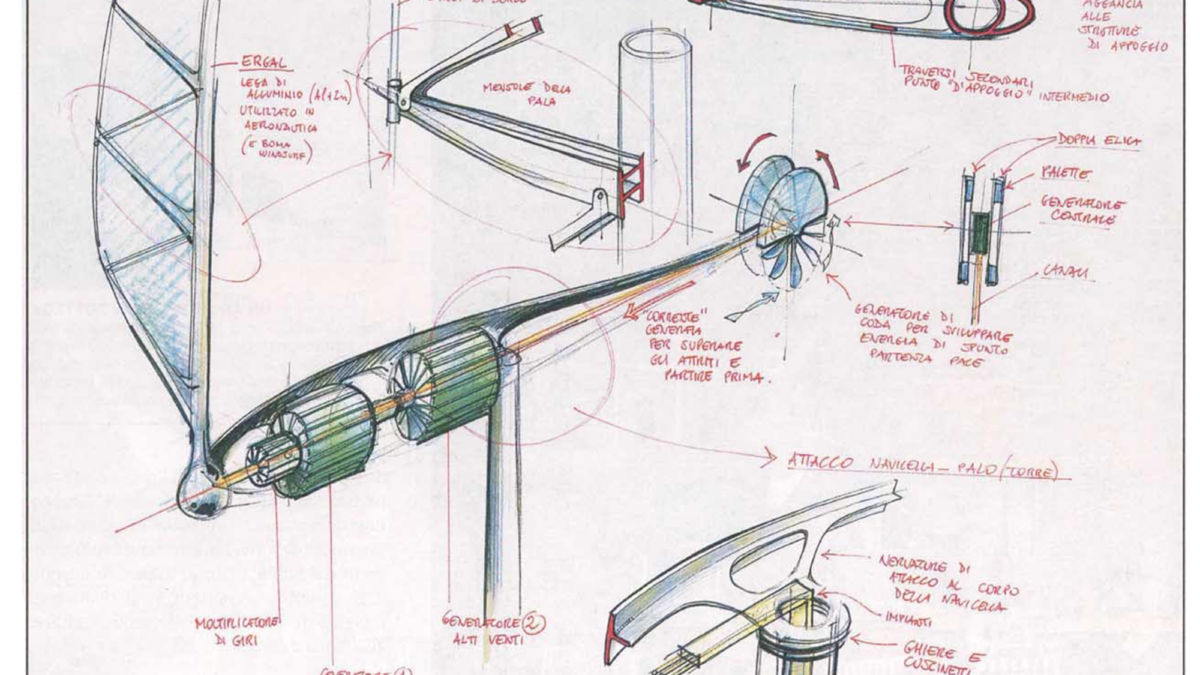
Policies for suburban and metropolitan green areas
26 June 2013
Energy policies and local action: a new role for cities
June 2011
- A proposal for local energy action: from residences to cities
Analysis of national policies in terms of energy savings in buildings - the well-known measures on the 55% tax deduction - highlight how national incentive policies are able to create a quantitative multiplication effect of interventions but are not able to guarantee a high quality of interventions.
In fact, tax incentives are used as an accessory element to renovation or replacement of facilities that arise on completely different assumptions and are not programmed on the basis of a knowledge of energy behavior global building.
Therefore, the deduction intervention is used to promote energy efficiency in buildings for insulated elements, mainly replacement of windows or boilers, but rarely a global intervention is carried out. It requires an overall assessment of the energy functioning of the building, a real energy audit activity.
A European study has highlighted how the global energy regeneration interventions of the building - and, generally, the most significant results - are obtained where local authorities are active with specific actions to support and promote energy interventions.
The proposal to promote Urban Energy Masterplan and Local Energy Action Plans was also discussed at the recent Dubrovnik Energy Management Conference in Cultural Heritage sponsored by the United Nations Development Program (UNDP) and Unesco. Among the leading experiences in Italy are those in progress in the province of Bolzano, where many municipalities and the province itself have promoted numerous initiatives in the pursuit of achieving the status of municipalities with zero CO2 emissions. This important objective must be based on the search for a strong integration between the overall environmental objective and the local social and economic benefit. The integration of global and diffuse local objectives determines the success of initiatives and the widespread dissemination of best practices, with significant benefits for the quality of life, for the economic accounts of households, for the competitiveness of companies, for the budgets of municipalities, up to the national energy budgets, strongly dependent from abroad. This is the best response to the needs of society and the country, consistent with the anti-nuclear approach that emerged clearly after the referendum of 13th June and with the new demands for participation in the policies that are at the basis of it.
Among the highlights of the most advanced energy action plans: the definition of an urban energy masterplan; the activity of consulting on the energy recovery of private buildings; Consulting services for energy management of buildings and production activities; the so-called energy management, which allows to reduce consumption even without interventions on traditional buildings; the spread of photovoltaic systems on the roofs of buildings and parking spaces; the integration of energy sources, for example through the diffusion of the use of biomass of agricultural or zootechnical origin or the diffusion of microhelix plants suitable for landscape and historical contexts of value; the diffusion of ecological means of public transport and the diffusion of distributors of alternative fuels (biogas, biodiesel, bioethanol and hydrogen) and charging points of electric cars.
- The residential civil sector in energy policies
The construction sector, one of the most energy-intensive in the European context, has been identified as a crucial sector compared to the European targets for energy saving and CO2 reduction. Among the various economic sectors, the building sector also provides the most favourable conditions for reducing energy consumption and greenhouse gas emissions.
According to all the actors, the greatest potential for energy savings today lies in the energy upgrading of existing buildings and, in particular, in residential buildings. In the case of the major European countries, residential construction accounts for more than half the consumption of the existing building stock and a substantial part of it has thermal characteristics that could be improved.
While private residential construction has one of the most significant energy-saving potential, several factors contribute to making this objective difficult to achieve:
- the size of the reference building environment;
- the highly differentiated nature of the park (each individual case is seen as a particular case requiring personalised interventions, that are non-standard, and therefore costly);
- the existence of numerous barriers to thermal upgrading (lack of information for private individuals, insufficiently trained experts to an overall approach to upgrading, insufficient incentives for private lessors, and so on).
It can be seen that, despite these factors, several public and private initiatives in favour of energy saving have nevertheless been implemented in residential buildings. However, it is clear that the thermal upgrading potential of private buildings is far from being fully exploited.
A number of studies show, in particular, that energy performance is not sufficiently taken into account in comparison with others when it is decided to carry out redevelopment work.
- The Italian Housing Park in the residential sector
Residential buildings in Italy are 11,226,595, for a total of 27,268,880 dwellings. Of these 6,598,536 were built before 1945. From the point of view of energy efficiency, however, these houses are not among the least performing, due to the good behavior of traditional load-bearing masonry. The proportion of houses with lower energy efficiency can be identified with that built between 1945 and 1981, which is 56% of the total. In fact - even if the first Italian legislation on energy efficiency in buildings started in 1976 - it is well known that the first years of implementation have not produced the desired results, not least because of the lack of controls and the lack of preparation of technical and administrative staff.
From a typological-dimensional point of view, the buildings are 42% single or semi-detached houses. The intermediate cut between 3 and 15 dwellings per building comprises 36% of dwellings. 22% of dwellings consist of large housing complexes with more than 16 dwellings.
The average size of the accommodation is 91.88 sq m.
The most representative size classes are between 80 and 99 sqm (26%) and between 60 and 79 sqm (21%).
As for the energy consumption of homes in Italy, it is estimated that it is among the lowest one among the most developed countries. This value, however, does not depend on high energy efficiency but on the average favorable climatic conditions. The figure compared to the day degrees (ie to the average climatic characteristics), equal to 169 kWh /sqm and it is among the highest.
The property is the main title of enjoyment of housing, equal to 71%, followed by rents with 20%.
For Italy, a very high number of unoccupied dwellings is reported, equal to 20%; a figure that is affected by a high percentage of second homes, about 11% of the total housing. This component has a negative impact on the propensity for energy redevelopment interventions, discouraging investments in view of the reduced, seasonal use of housing.
Regarding the stimulus to the energy upgrading of buildings, Italy has focused mainly on tax incentives. In 2007, the government promoted a specific measure that raised the tax deduction to 55%, with preferential VAT to 10%, a greater incentive than that for traditional building recovery interventions, 36%, which has already included energy saving measures since 1998.
The Italian State has entrusted ENEA with the management and monitoring of the applications for deduction for energy upgrading. Applications were 106,000 in 2007 alone. It is to be noted - as a confirmation of the positive reception of the measure in the social and economic composition of the nation - the fact that - having emerged some doubt in the government on the confirmation or not of the measure at the end of 2008 - public opinion, the national media and many economic organisations and local authorities have strongly supported, with positive results, the renewal of the tax incentive for 2009-2011.
As regards the subjective characteristics of the applications submitted, there is a clear prevalence of private citizens (93%) and a reduced presence of applications from condominiums and other legal entities.
Regarding the technical content of the 55% tax relief applications, the main elements emerged are:
- prevalence of isolated interventions (in particular boiler replacement and window replacement) compared to integrated interventions.
- very limited number of interventions involving the outer shell of the building or dwelling.
Regarding the decision to privilege the tax incentive way on voluntary membership by the Italian State it is useful to make two main notations:
- The measure has also played the role of an incentive to the emergence of the underground economy, still widespread in the recovery of private homes, particularly in southern Italy, where, however, the persistent and rooted spread of the underground economy has probably contributed to limiting the spread of energy redevelopment related to tax concessions, compared to the North;
- The measure has met the favor of the average Italian consumer. A consumer not inclined to adhere to complex and mandatory technical and procedural directives. However, it has not significantly encouraged the interventions of "global energy redevelopment".
The existence of persistent difficulties in the execution of energy upgrading of the building envelope is also witnessed by the experience of "white certificates"[1].
The overall performance of the mechanism of the white certificates shows a very favorable trend and a constant exceeding of the targets. In addition, the civilian sector is overall predominant, and a significant share of the savings certificates (21%) is attributed to the thermal requirements in the civil sector. As a matter of fact, there is almost no percentage of interventions on the building envelope from the detail of the interventions performed.
Out of a total of 1,768 projects approved and drawn up in accordance with standardised data sheets, only 19 in Italy concerned the insulation of buildings for heating purposes; 22 projects concerned the use of double glazing; 3 insulation of buildings for cooling needs.
A peculiar aspect - relative in general to the diffusion of interventions of requalification of the housing, coming from the data of the 2001 Census carried out by ISTAT on housing and concerning the interventions in dwellings carried out in the decade preceding the census year - is represented by the following issue: if in absolute terms the number of interventions outstands in buildings where the owner and the inhabitant are the same, in relative terms there has been a percentage of interventions not too dissimilar to houses occupied by tenants: 49% in property and 40% in rental houses.
This aspect is perhaps due to the increased mobility of the housing market caused by rental houses. In fact, it is an element conducive to renovation work, which are often carried out in conjunction with the transfer to the new accommodation. On the contrary, the greater propensity to invest in energy redevelopment - that should characterize a property ownership - could be "hindered" by the low mobility that characterizes owner-occupied houses. This seems to confirm the fact that mobility, rather than property, is a factor contributing to renovation work, while long stay in housing tends to be a brake.
Hence the need to stimulate energy redevelopment as an option and not necessarily as an ancillary element to traditional renovations.
- The current scenario: perspectives and criticalities
The transposition into Italian law of the European Energy Performance of Building Directive (EPBD) is the most significant element of new national legislation.
It should be noted, however, the slowness and prudence in the approval of implementing legislation, which seem oriented to mitigate the impact on Italian society.
There are fears that the social composition - in particular of private owners - will react to the introduction of new obligations and costs linked to housing management and that certification will be perceived as an additional "bureaucratic compliance".
Strong information support and specific awareness of energy issues is therefore needed, such as to perceive the redevelopment and energy certification as a valid and socially appreciated investment and a factor of economic development of the most performing properties, both in the case of rent and purchase.
An important driving force, although necessarily geographically discontinuous, is played by regional and local administrations. Mostly, these Administrations – therefore not at a national level - have taken over the goal of energy upgrading of buildings, with an important production of regional laws and local urban and building regulations that provide standards and incentives for "sustainable building".
As mentioned, a success story is represented by the region of South Tyrol. Here the urban planning legislation has developed in an integrated way with the spread of methods of energy certification of independent technical bodies, such as the Agency "casaclima".
Recently, the strong decentralisation of competences in Italy, however, leads to believe that a full success - not limited to the most "virtuous" regions - of the goal of the "energy redevelopment" should not be separated from agreements and actions integrated with the regional and local level.
Regarding the mechanism of tax incentives, the new horizons resulting from the transposition of the EPB Directive should lead to a greater focus on the concept of global redevelopment. This should be encouraged more favourably than by isolated measures and should also be facilitated at an early stage.
The facilitation of the purchase of high efficiency gas boilers, for example, responds to a national policy of energy supply very focused on agreements with large gas producing countries. On the contrary, in the absence of any other changes to the building envelope, it fails to bring about a significant qualitative leap in heating energy consumption.
Interesting experiences carried out at local level show how public administrations can start the drive of energy redevelopment through modest initial investments in technical assistance, necessary to provide the necessary and correct information to the owners, so as to induce them to the decision to invest in a virtuous path requalification-energy certification of the property.
In addition, and finally, it must be stressed that an exclusively fiscal incentive mechanism, although extremely favourable as the Italian one, is characterized by a limited penetration in the geographical areas structurally characterized by the underground economy.
[1] The "white certificates", also called "Energy Efficiency Certificates” (TEE), attest to the achievement of energy savings through the application of efficient technologies and systems. They are issued by the Electricity Market Operator (GME) on the basis of certifications of savings achieved, carried out by the Authority. A certificate is equivalent to the saving of 1 ton of oil equivalent (toe), which is the conventional unit of measure commonly used in energy balances to express all energy sources taking into account their calorific value (www.autorita.energia.it)




